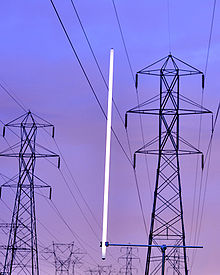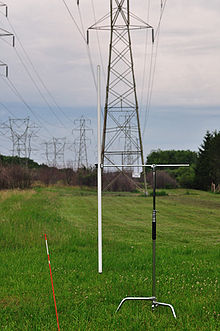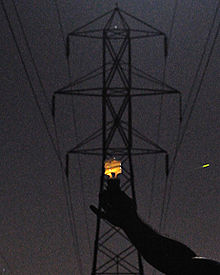| Revision as of 13:36, 26 June 2010 editRehman (talk | contribs)Autopatrolled, Administrators23,585 edits →Hydroelectricity: i would like your input← Previous edit | Revision as of 20:38, 30 June 2010 edit undoElectron18 (talk | contribs)26 edits →Electron18: new sectionNext edit → | ||
| Line 16: | Line 16: | ||
| == Hydroelectricity == | == Hydroelectricity == | ||
| Hello Wtshymanski. Being the two latest editors (along with ]) who edited the article, I would like to hear on what you think about the new . I intend to change the article to that version soon as discussed on the article talkpage. Please share your views ]. Thanks. Kind regards. ]<sup>(])</sup> 13:36, 26 June 2010 (UTC) | Hello Wtshymanski. Being the two latest editors (along with ]) who edited the article, I would like to hear on what you think about the new . I intend to change the article to that version soon as discussed on the article talkpage. Please share your views ]. Thanks. Kind regards. ]<sup>(])</sup> 13:36, 26 June 2010 (UTC) | ||
| == Electron18 == | |||
| 1. Sorry, I do not speak English, but understand it all. I am an expert on interfaces. | |||
| 2. Ok, translation of site bad, but All the information here about the RS-232. COM-port is RS-232. | |||
| 3. There inserted original text of the standard RS-232. For example, the description of the signals RS-232. | |||
| The most important thing that the site has direct links to the original texts of the standards ITU-T and ANSI-EIA-232. | |||
| You can read the standards in the original (. Pdf). That you can not find the network. | |||
| 4. If you read the original EIA-232-F, you will understand that the article in Wiki about the RS-232 bad (Amateur). | |||
| I can not edit your article (bad English), but other participants will be able to read the original standard article improved the Wiki. | |||
Revision as of 20:38, 30 June 2010
blanked the page.
Fluorescent lamp photo
I am the photographer of the fluorescent lamp glowing under the power lines. I did use Photoshop to crop and sharpen the picture but it is entirely accurate. I shoot in Nikon RAW so I do not use any in camera color correction or sharpening.

I set the equipment up before dusk so I had enough light to focus properly. I originally had the tube (an 8 footer) clamped in the middle but the glow below the clamp was distinctly dimmer so I moved the lamp up for the real shot.

And just for fun, here's a shot of a compact fluorescent glowing. I took this the night before, along with some of the 8' tube hand held. The short exposure required to defeat my inevitable shaking of the lamps required a high ISO that made the photos too grainy for my taste. That's what led to the clamped shots the next night. BTW, the green streak is a lightning bug flying through the scene.

- (Wtshymanski Comments about the first picture, added here by Selladour)Interesting picture, but is it a composite? Something about this doesn't quite look right, and I was a little alarmed to see that Photoshop was involved in making this image. Could you explain it a little? Thanks, --Wtshymanski (talk) 13:58, 23 June 2010 (UTC)
- Wtshymanski, I'm new at this, so please forgive and instruct on any breaches of etiquette. The photographer (my brother) has put the originals above, so I hope you'll agree there were no shenanigans and that it is worth putting the picture back on the fluorescent tube page. The next time you drag your (no doubt) lovely and long suffering bride to the left edge of the middle of nowhere North Dakota to photograph power lines, you gotta bring a fluorescent tube. You can pick it up at the ND Walmart and return it when you are done (you don’t even have to open the package). If you point the tube at the power line like a light saber, it will glow (dimly), if you hold it towards the middle with two hands, it will be dark between your hands but lit beyond them(you are a conductor, so your hands will be at the same potential). The Electric field drops off by 1/(r squared), so if you hold the tube parallel to the wires, it will go out. If you hold the tube tangent to the circumference of a circle centered on the wire, it should also go out. I’m not sure why you’re still sitting here; go get a fluorescent tube and visit your local power lines. You just gotta. Thanks Selladour (talk) 01:53, 24 June 2010 (UTC)
- PS, the CFL only glows visibly when we hold(and ground out) the bottom. I guess it is too small to have a significant change in the electric field unless we put the electrode at zero.
- The stand is metal with rubber clamps and feet. The bulb was dimmer below the clamp. The next time I visit my brother, I'll have to try it with a short horizontal arm; being close to the vertical metal tube should reduce the electric field. (The power line are next to my brother's house)Selladour (talk) 02:20, 24 June 2010 (UTC)
Hydroelectricity
Hello Wtshymanski. Being the two latest editors (along with NortyNort) who edited the article, I would like to hear on what you think about the new merged version. I intend to change the article to that version soon as discussed on the article talkpage. Please share your views here. Thanks. Kind regards. Rehman 13:36, 26 June 2010 (UTC)
Electron18
1. Sorry, I do not speak English, but understand it all. I am an expert on interfaces. 2. Ok, translation of site bad, but All the information here about the RS-232. COM-port is RS-232. 3. There inserted original text of the standard RS-232. For example, the description of the signals RS-232. The most important thing that the site has direct links to the original texts of the standards ITU-T and ANSI-EIA-232. You can read the standards in the original (. Pdf). That you can not find the network. 4. If you read the original EIA-232-F, you will understand that the article in Wiki about the RS-232 bad (Amateur).
I can not edit your article (bad English), but other participants will be able to read the original standard article improved the Wiki.